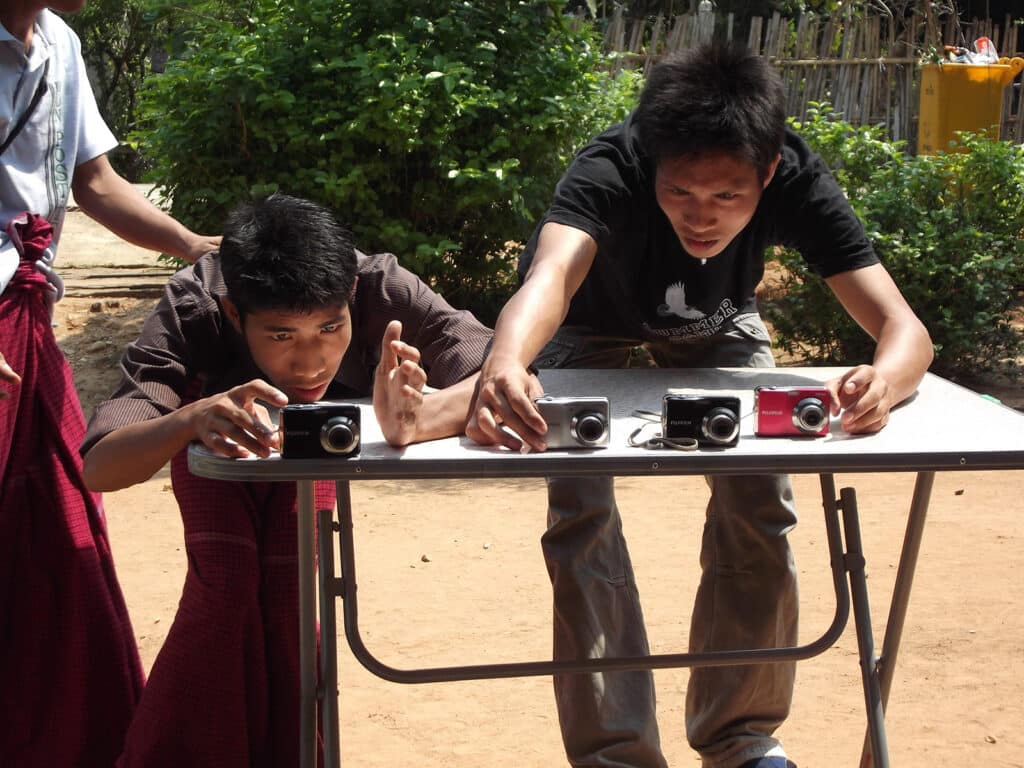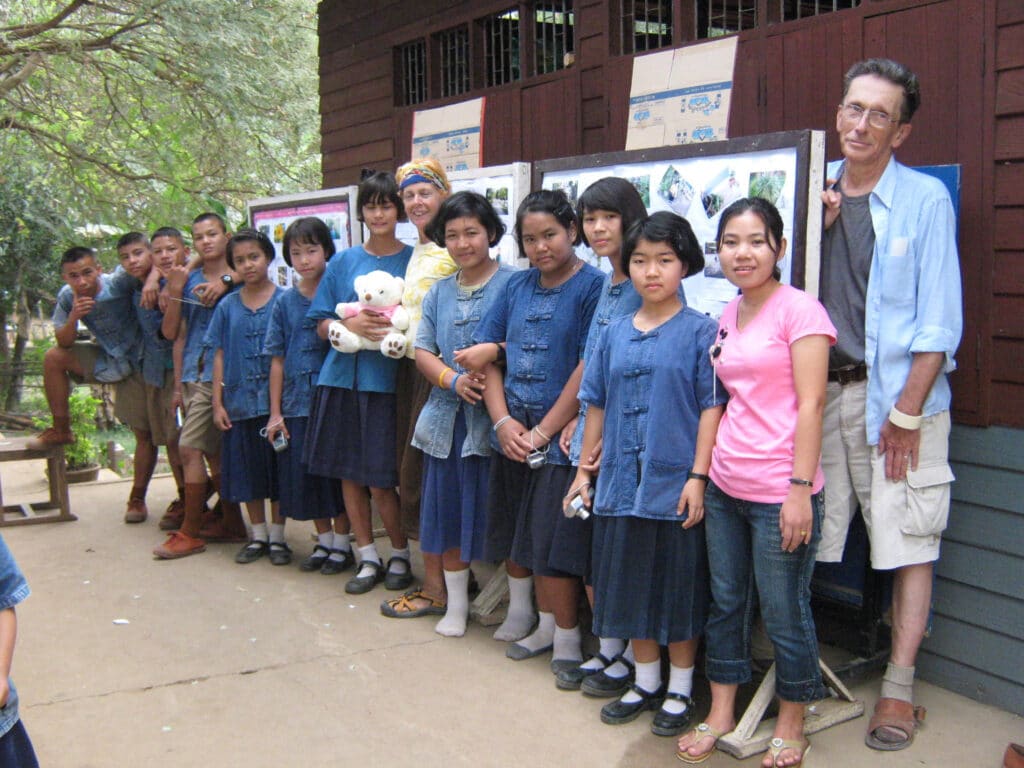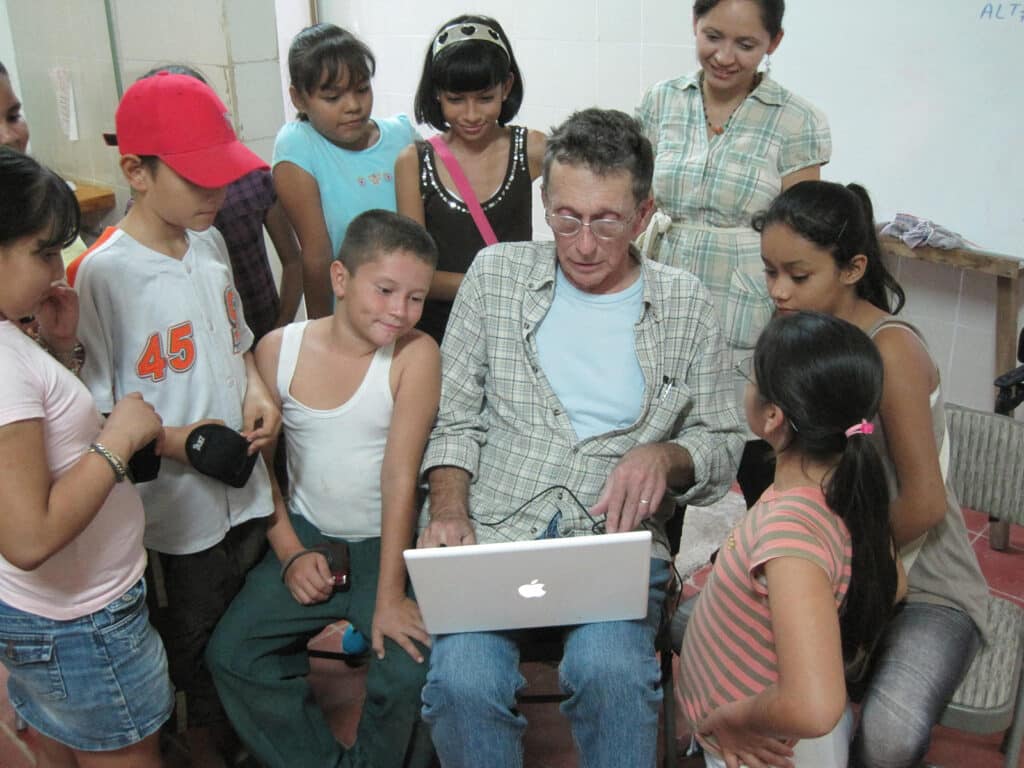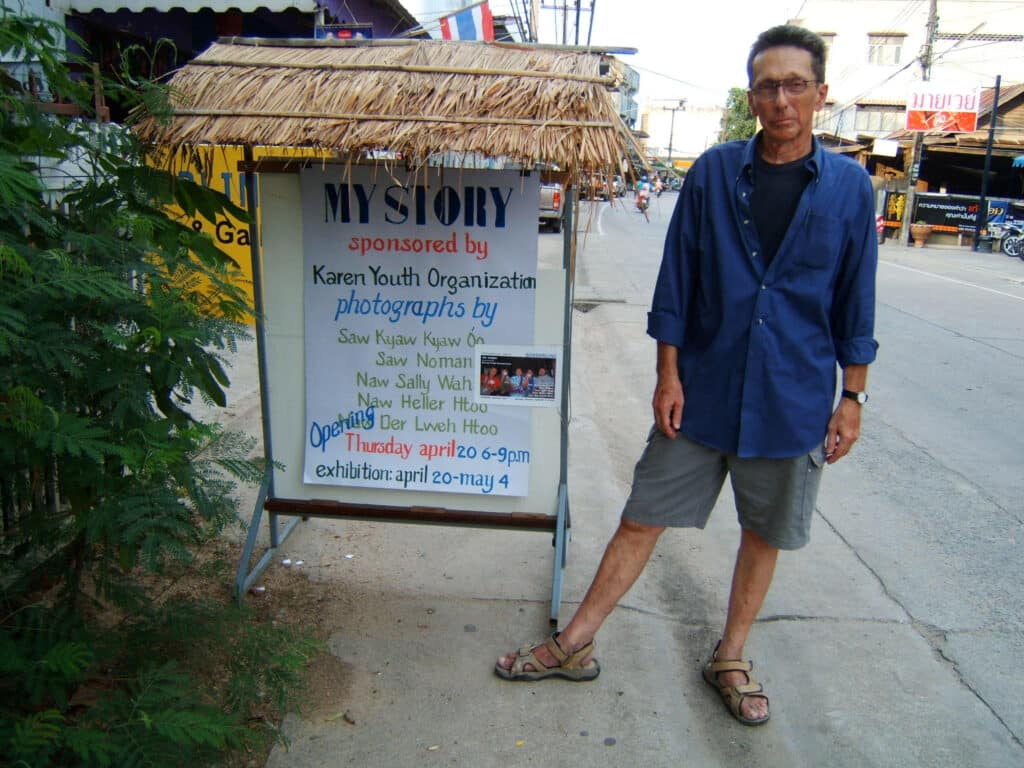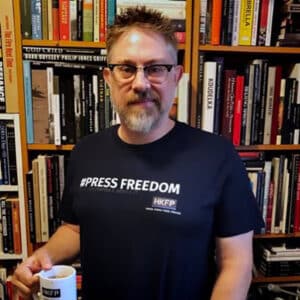The town of Mae Sot, Thailand lays along the eastern bank of the Moei River, an eight-hour overnight bus journey from Bangkok. Across the Moei from Mae Sot is the military controlled country of Myanmar. The “Friendship Bridge” which spans the river at Mae Sot makes the town an important point for anyone wishing to cross between the two countries. But there is more to this border town then first meets the eye. Besides the shops that line the streets and back alleys of Mae Sot, there is also a large, clandestine world: that of the Karen People and Burmese refugees who have fled their homeland in Myanmar looking for a better, and safer, life.
In February of 2006 I traveled to Mae Sot to spend a month photographing the Karen refugees living along the border, and the Mae Tao Clinic, run by Dr. Cythia Maung, a refugee herself, to care for those along the border.
At the guest house where I was staying, I met and befriended Susan and Nat Tileston, photographers on the border for a very different photography project than mine. The Tilestons were there starting the My Story Photo Project. They began with 5 Karen young people along the border, with the goal to give their students the tools to document their lives through photography.
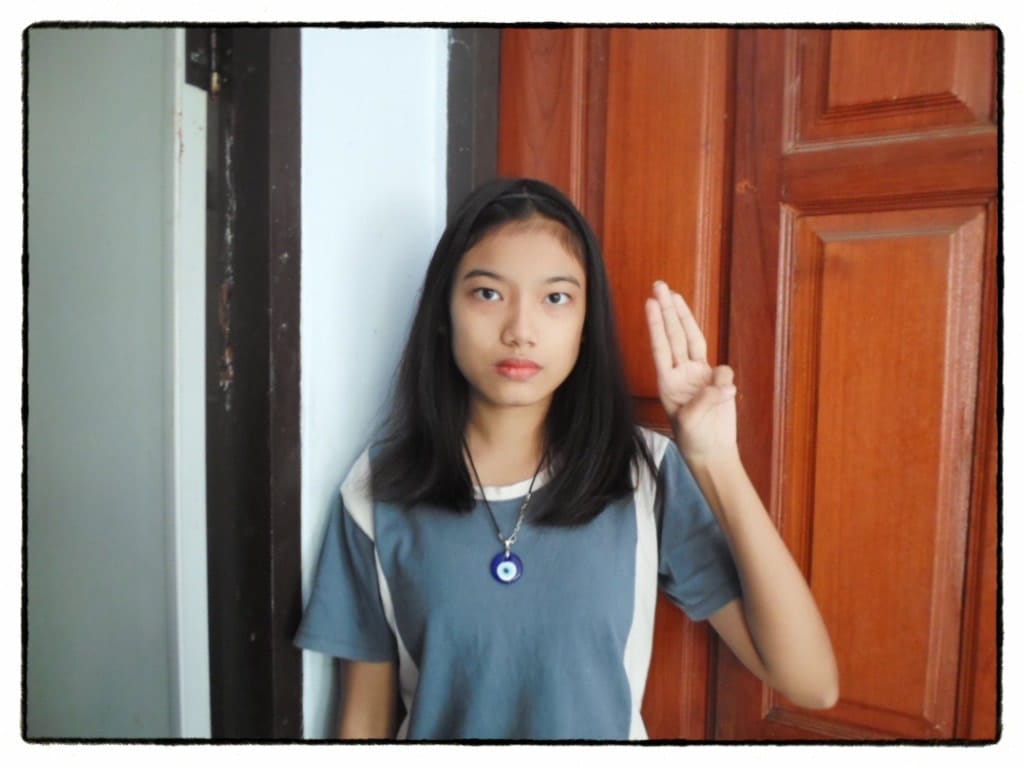
Susan and Nat met in New York City in 1976 when Nat, working as a professional photographer, was looking for an assistant. Nat had gone to the Chicago Art Institute and worked with commercial photographers for a while before striking out on his own in 1975. He free-lanced for the New York Times, Village Voice, Soho Weekly News, and quite a few dance and theater companies. Nat also has work in the permanent collections of the Whitney Museum of American Art and the Nova Scotia Art Bank.
Susan had picked up a Nikon camera while working as a teacher at a Montessori school in Japan. “By a lucky chance I sold some of my photos to the Japanese Tourist Bureau. I decided I’d quit my job as a Montessori teacher and become a photographer in NYC. What was I thinking? The number of young wanna-be photographers with MA degrees and experience was discouragingly long. But a mutual friend introduced me to Nat.”
And as they say, the rest is history.
When they retired, with more than 50 years of experience working as professional photographers in both New York and Nova Scotia, they were looking for a way to share their skills and expand their horizons at the same time.
Then, in 2004, Susan traveled to Mae Sot to teach English to Burmese refugees for the Burma Volunteer Program. At the time, the only thing she knew about Burma, now known as Myanmar, was the story of Aung San Su Kyi (a non-violent opposition figure to her country’s military dictatorship, and Nobel Peace Prize laureate in 1991), who at the time was under house arrest at the hands of the ruling military junta.
The only daughter of Aung San, the father of Myanmar, she rose to prominence in 8888 Uprising in August 1988. Su Kyi became the leader of the National League for Democracy (NLD). When the junta allowed elections in 1990, the NLD won the elections in a landslide, but the results were nullified by the junta, who refused to hand over power, and was placed under house arrest, where she remained for 15 of the years between her arrest in 1989 and 2010.
While in Mae Sot, a Karen community worker, who is referred to here as YW for safety reasons due to the current war raging in Myanmar at the moment, took Susan to visit Mae La Oo. The camp is one of the 9 refugee camps that dot the Thai/Myanmar border. It sits on top of a mountain, crammed with bamboo houses with leaf roofs, protected from the ever-present danger of fire by water-filled plastic bags hanging from eaves. Electric wires are strung every which way for power, as bumpy dirt tracks that become slippery with mud in the rainy season act as roads, zig-zagging their way around. There are small vegetable gardens spread around, a few cinder block administration buildings, and narrow PVC pipes that bring intermittent water from the river at the mountain’s base.
Susan Tileston tells about their encounter: “YW knew I was a photographer and said, ‘Why don’t you teach photography to some of our young people? They don’t have much to do, some English and computer classes, and they do drugs and drink so it’s a problem.’ ‘I’ll think about it,’ I said. But I was interested!”
When Susan returned to Canada, she broached the subject with Nat, who at first was reluctant to take on such a project. But Nat came around eventually, and the pair raised some money and headed back to the border.
“We raised enough money to buy 10 entry-level digital cameras and headed to Mae Sot in January 2006. Our idea was to give participants some basic photo instruction and then send them out to document their lives. Maybe we could have an exhibition, maybe we could sell the prints, and give the proceeds to the photographers. We wanted them to have fun, to create something of their own, and show it to their community.”
So the My Story project was born. And through word of mouth the project continued. They also work with some NGO’s, CBO’s, and migrant schools. But as of this writing, over 600 students have gone through the project, with each workshop running from 7 to 10 days.
“We teach by doing. How a camera works, how to use the camera ( buttons, settings), how it’s all about the light. We use whiteboards, markers, digital projectors, and hopefully a translator, although we have done without… Then we give them assignments (take a photo of your friend w/o showing his/her face, take a photo of something moving, show us your home, photo scavenger hunt ) Next they create photo stories with one or more images. Lastly they create a group photo essay.”
At the end, the students edit down their photographs to three for exhibition, which is then held wherever the workshop was located. They also have a formal exhibition from all of the season’s workshops at the Borderline Collective in Mae Sot in and then in Canada. They have also been invited to exhibit the work in other spaces. The proceeds are split, with 50% going to the student, and the other 50% being used to purchase more cameras to keep the project going.
They have gotten occasional grants for the project, and Kodak donated some cameras early on, but mostly they keep going with donations from family and friends. And since 2023, students have been using cell phones because entry-level digital cameras are increasingly hard to find and source, and cell phones, like in the Western world, are ubiquitous in Southeast Asia, and are inexpensive and have pretty reliable photo tools.
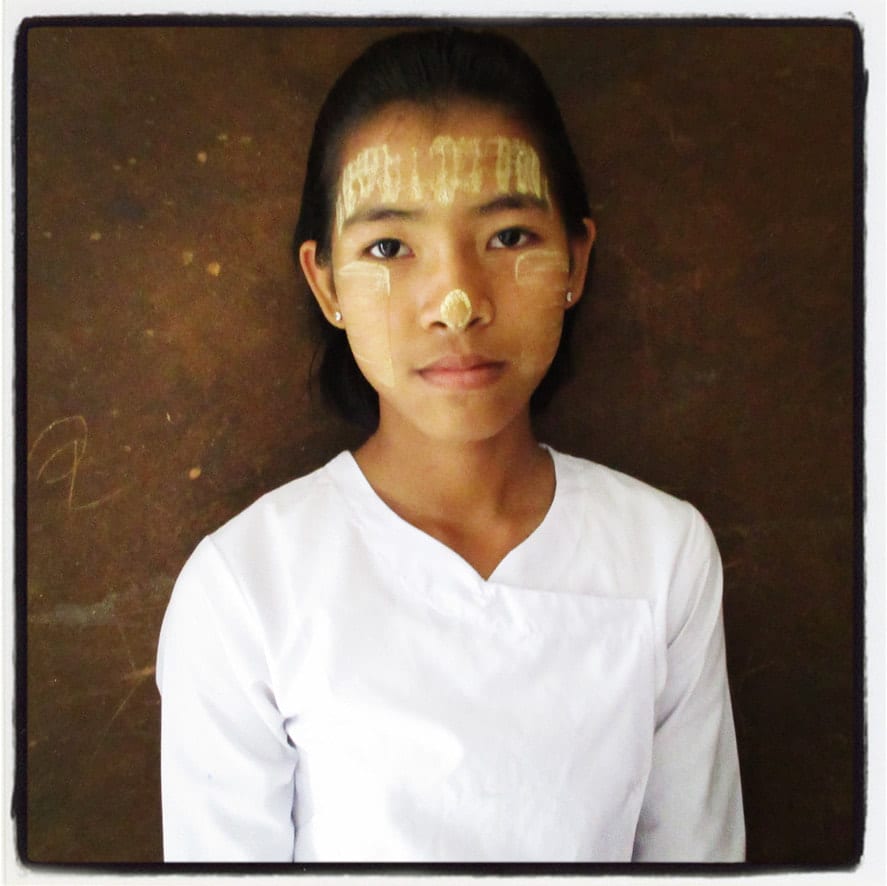
Because of the safety concerns with the students, the project never posts the faces of their students without first getting permission. Many students often don’t use their real names to further protect themselves. “One of the most poignant images I remember was from a young student in Pyin Oo Lwin, Myanmar,” tells Susan Tileston. “The image was of several crumpled dirty kyat notes. The caption: ‘My country.'”
Nat passed away in 2019, but Susan carried on with the project. “Nat always said he didn’t like to travel but he was the best traveling/ teaching partner in the world,” she says. “Nothing phased him: travel delays, lost reservations, sleeping on bamboo floors next to students, freezing in Pyin Oo Lwin, fan-less in boiling Mae Pa, electric blackouts in Yangon. He just smiled and kept on going. He was also the project tech guy. With infinite patience for recalcitrant camera batteries, non-retractable camera lenses, wonky digital projectors, not to mention the time he took with individual students and their questions. All he asked was strong coffee in the a.m. and cold beer in the evening. I miss him.”
Covid stopped the project in 2020. And then the 2021 military coup in Myanmar stopped any travel into the country and ended any chance for workshops there.
The February 1, 2021 coup, which saw the Myanmar military, also known as the Tatmataw, seize power after once again denying the results of an election that had seen the Nation League for Democracy win. Aung San Suu Kyi, and many members of her government were again arrested, and once again a military junta took control of the government.
Three years on, and the country is in turmoil as various ethnic groups inside of Myanmar, including the Karen, continue their assault on the government, seizing lands as they go. The junta has responded by attacking towns and villages, and conscripting people into military service, including the Rohingya, who the government does not see as citizens, and has actively worked to murder and drive them from the country.
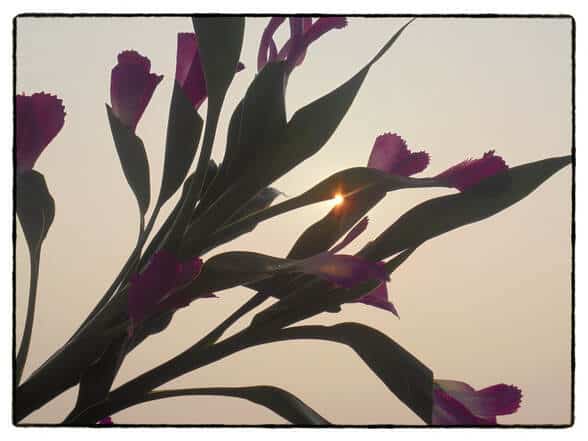
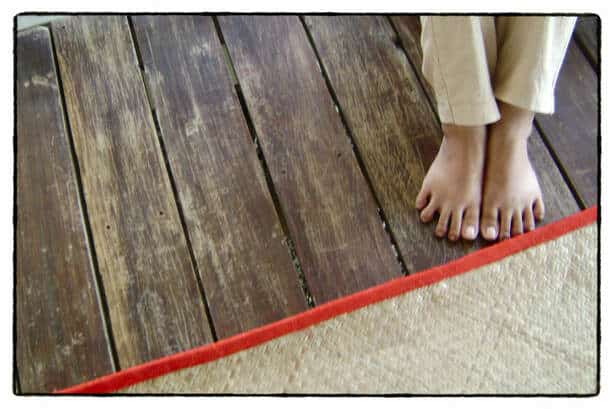
Despite all of this, My Story is once again happening on the Thailand/Myanmar border. Security is tighter because of the increase in fighting just across the bridge from Mae Sot, as Myawaddy, the town on the Myanmar side, has come under more direct attacks. This had led to even more refugees fleeing to the Thai side of the border, even with the Friendship Bridge crossing closed, and inundating Mae Sot, and the Mae Tao clinic.
A recent workshop in March of this year had 10 students, between the ages of 14 and 21. So even with all the difficulties in the region, and just shy of their 20-year anniversary, My Story continues to teach those who want to learn how to document their lives through photography.
Updates on the My Story Project, more information, and more work from the students, can be found on their website here.
News on the situation in Myanmar can be found on Frontier Myanmar, launched in 2015 to provide balanced, in-depth reporting and insights from the ground.

